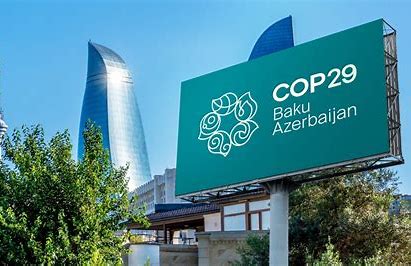Introduction
This year’s COP29 summit in Azerbaijan stands out from previous conferences, including COP28 and the upcoming COP in Brazil. The focus this year is on climate financing, as global leaders are contending with budgetary constraints, rising populism, and international tensions. Notably, some world leaders have opted not to attend, adding a unique dynamic to this year’s negotiations on climate action.
What’s at Stake at COP29
COP29 is critical, occurring just before the February 2025 deadline for countries to submit updated Nationally Determined Contributions (NDCs) as required under the Paris Agreement. These NDCs represent each nation’s commitment to emissions reductions, central to the global goal of limiting warming below 1.5°C. However, existing pledges are insufficient; current projections suggest a rise above 2°C by 2100, which could result in increasingly severe climate impacts.
Another high-stakes element is the need to secure new financing channels for climate initiatives, particularly to help developing nations mitigate and adapt to climate change. Talks will focus on essential financial mechanisms like the Loss and Damage Fund and adaptation funding, although budget pressures on high-income countries create tension over the likelihood of significant financial commitments.
COP29’s outcomes carry profound implications for vulnerable communities around the globe. Each fraction of a degree increase in temperature exacerbates the frequency and severity of climate disasters, with the world’s poorest populations bearing the greatest burden.


What to Expect from COP29
Wealthier nations are under pressure to fulfill their existing climate finance commitments and set clearer timelines for further contributions. Another priority is the need for ambitious emissions reductions and effective technology transfer to support adaptation in high-risk regions. Tracking progress through accountability measures will be essential to ensure transparency regarding national climate goals and financial promises. Adding to the political dynamics is the recent re-election of Donald Trump, whose critical stance on climate change may indirectly influence the negotiations.
Africa’s Role and Expectations at COP29
Africa’s presence at COP29 will emphasize the need for climate justice, as African nations contribute minimally to global emissions but face high vulnerability to climate impacts. Leaders from the continent are expected to advocate for increased support for adaptation, from infrastructure resilience to agricultural stability, as well as for funds to support renewable energy transitions. African youth are also expected to make a strong appearance, with demands for urgent action and direct support for local climate initiatives.
Spotlight on the Clean Cities Project in Malawi
In Malawi, the Clean Cities Project highlights the role of local adaptation efforts. Although Malawi contributes minimally to global emissions, this initiative focuses on climate adaptation in vulnerable communities, showcasing models that can inspire similar projects worldwide.
Recently, the project launched a climate adaptation and resilience initiative in Salima district’s flood-prone Traditional Authority Ndindi. The region has been devastated by floods and rising water levels, which have destroyed homes, livestock, and farms. In response, the Clean Cities Project has piloted a solution to transform stagnant water into a fish pond, creating a sustainable income source for the affected community while enhancing resilience to future climate shocks. The pond is organized as a cooperative, allowing the community to manage it collectively and generate income that can sustain their livelihoods and reduce their vulnerability to climate impacts.
Our message is clear. We are advocating for climate funds to directly reach grassroots projects, as opposed to being diverted through government systems where funds often fail to reach the intended beneficiaries. This approach aims to ensure that climate finance directly supports communities most affected by climate impacts, fostering transparency and real, measurable change. The project aligns with COP29’s broader goals of local climate action and grassroots resilience, serving as a model for community-led adaptation initiatives.
Conclusion
COP29 presents a pivotal opportunity for meaningful international climate action. While the summit will push for ambitious emissions reductions and financial commitments, projects like the Clean Cities Project illustrate how local initiatives can drive resilience and adaptation. As the world watches, there is hope that COP29 will not only advance climate goals but also emphasize the importance of funding local efforts across Africa, ensuring that grassroots communities are supported in their fight against climate change.

